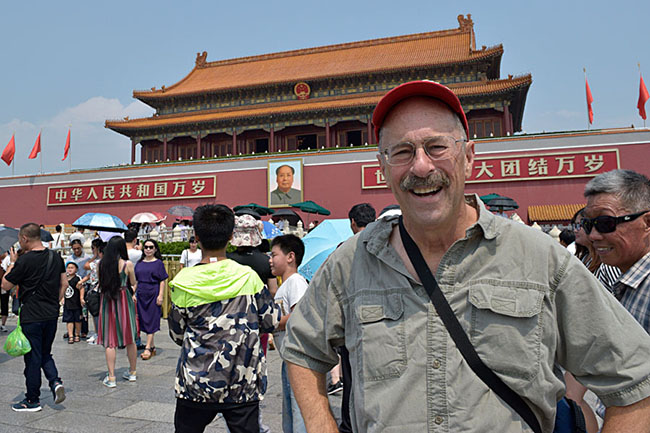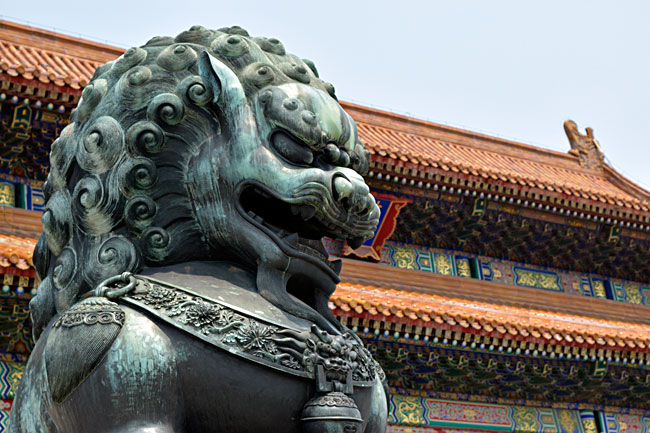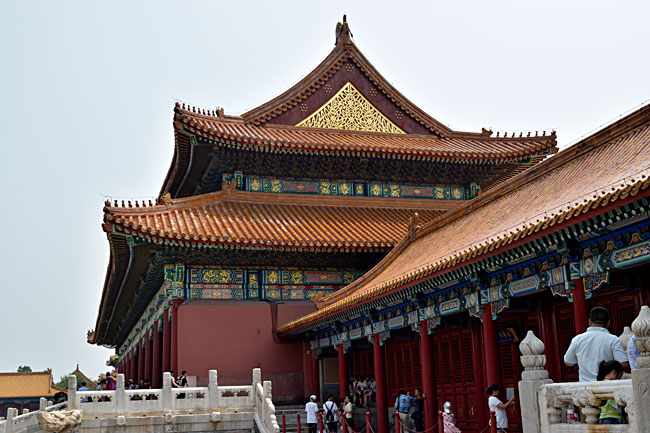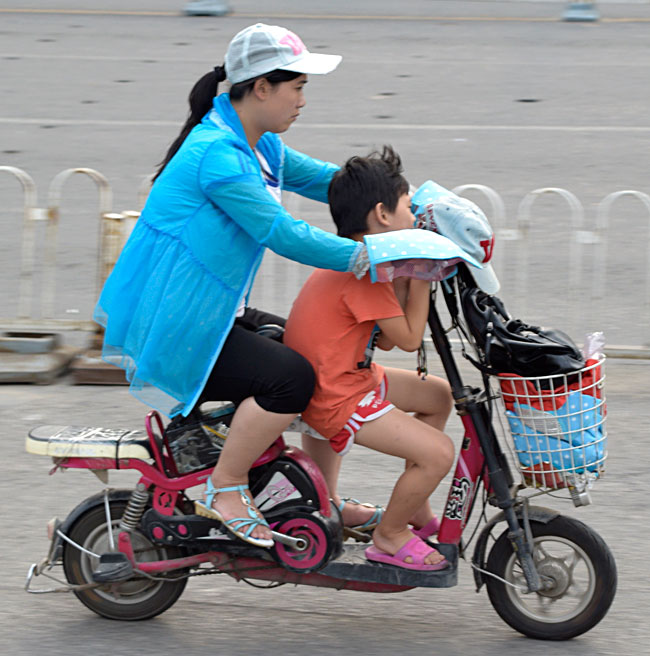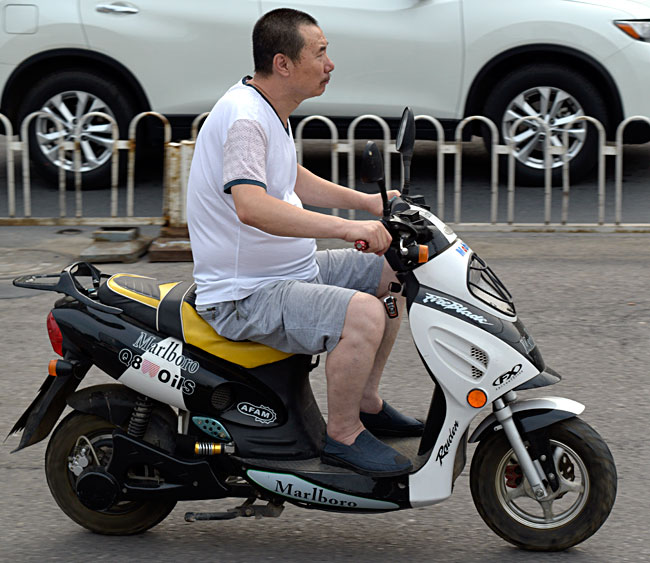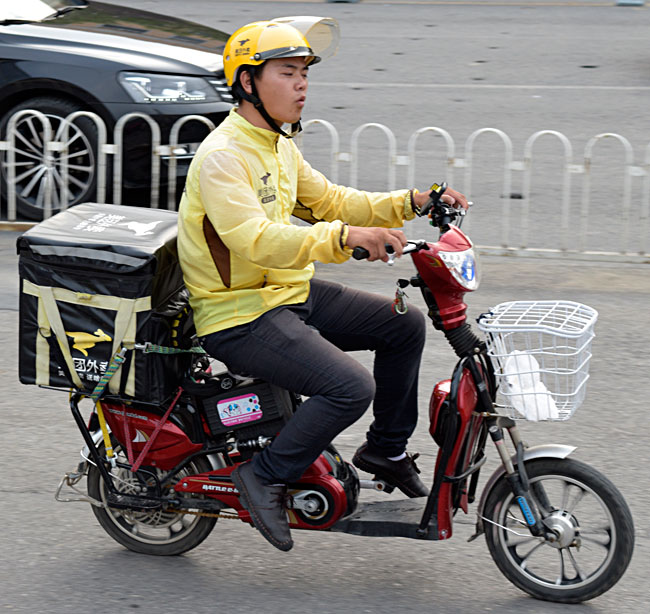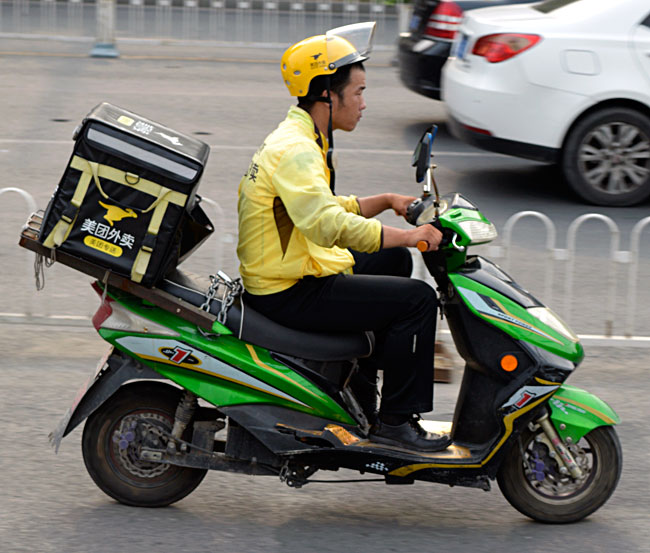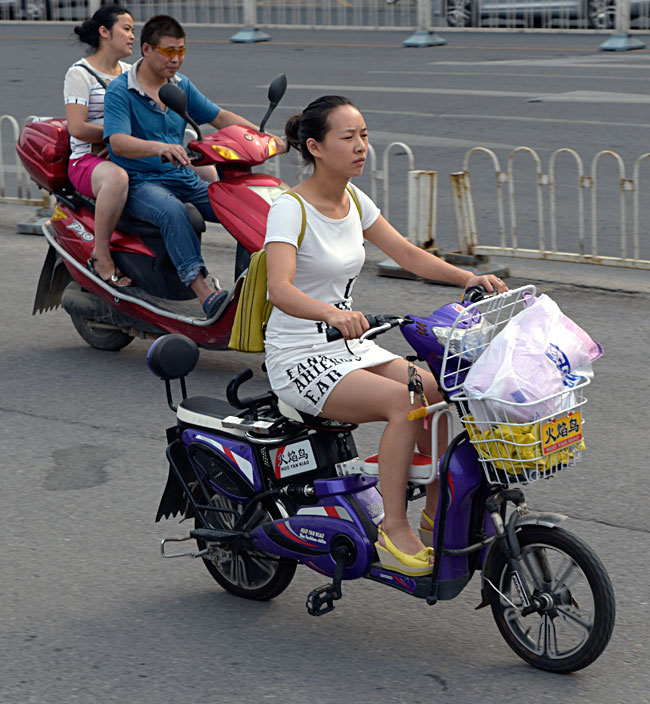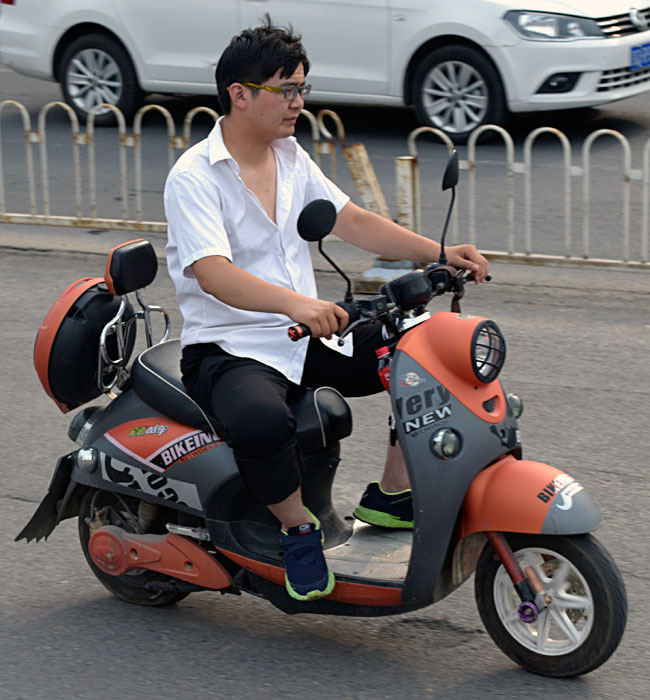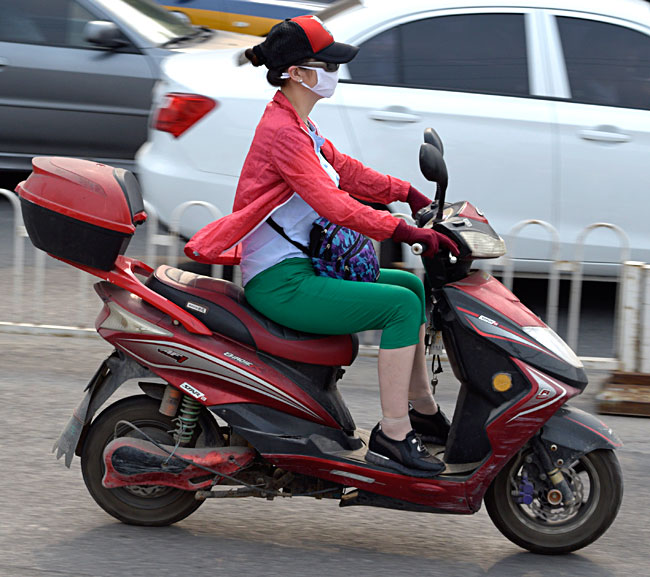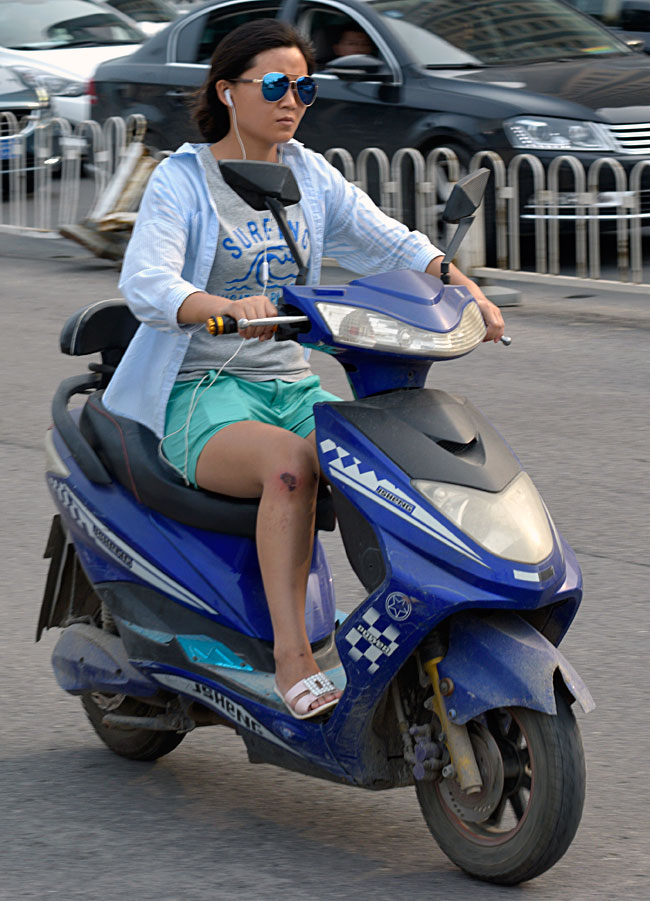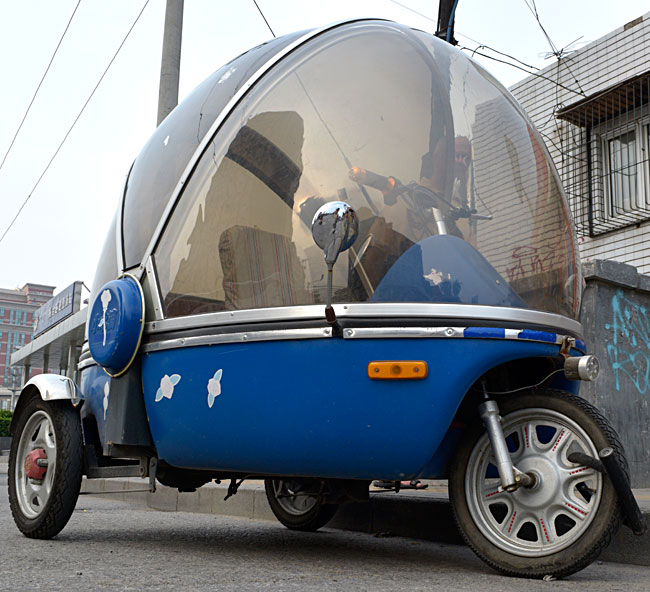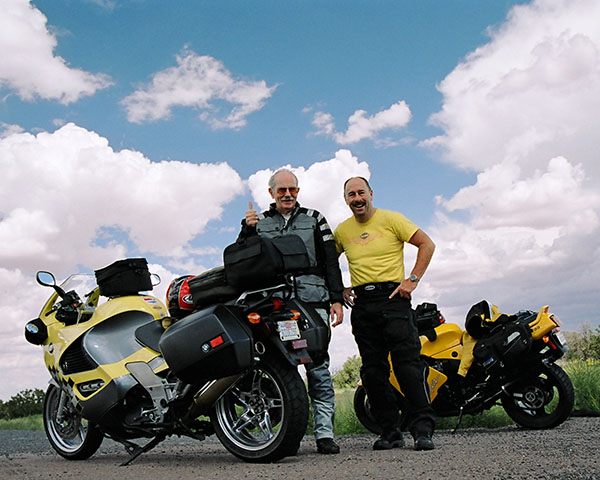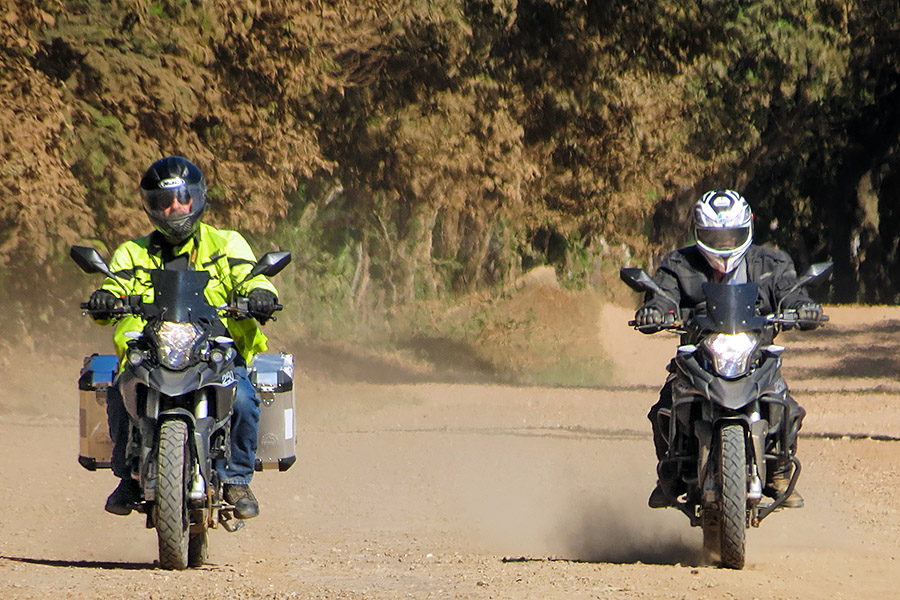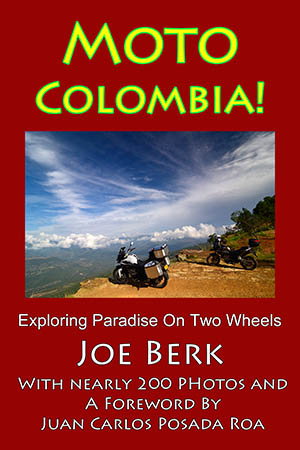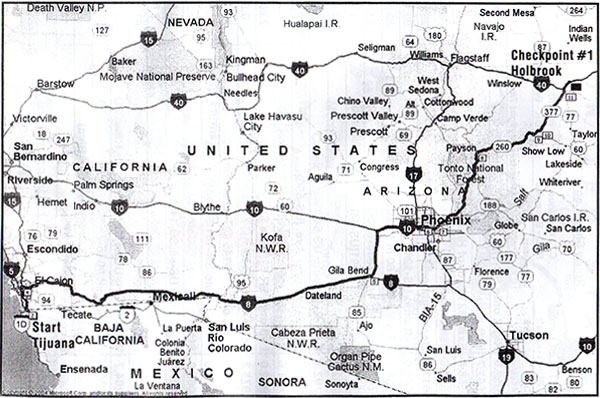
Tijuana is where the 2005 Three Flags Classic started, and in order to start from there, we had to get there. Marty and I both live near Los Angeles in southern California, and we had both ridden in Baja before, so getting to Mexico was not that intimidating. But it was still a 140 mile ride for us and it still involved crossing an international border. We rode down the afternoon before our departure, allowing sufficient time to find and check into the Tijuana Grand Hotel.
I was a bit nervous that day. Yeah, I had done a number of big rides already, but for this one, I knew that I would be on the road for two weeks and that we would cover about 5,000 miles. I also knew part of it would be hot, part of it would be cold, part of it would be sunny, and parts of it would most likely be wet. I would be right on all counts. I just didn’t know (yet) just how right I would be on all counts.
We arrived in mid-afternoon and walked around Tijuana a bit. In those days, crossing the border into Mexico was probably the easiest border crossing you might imagine. There were no stops, no visa required, no questions to answer…no anything. All there was to it was riding under a sign that said Bienvenidos A Mexico, and trying not to drop your bike riding across a line of monstrous Bots dots (you know, those polished metal hemispheres the size of a large grapefruit…they were designed to slow vehicular traffic, and they worked). Just like that, and we were in Old Mexico.
We found Tijuana’s Grand Hotel, we checked in, and we walked around downtown TJ a bit. It was fun. Goofy photos, and more.
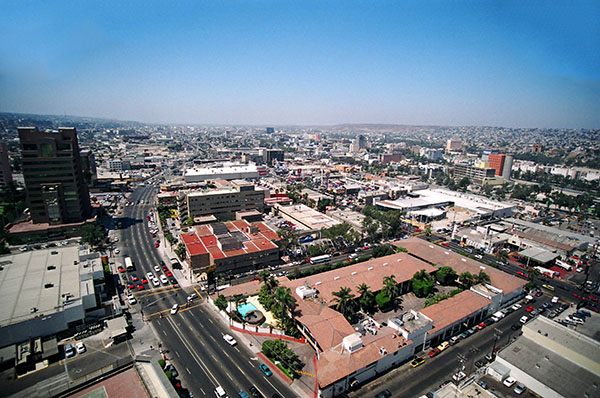

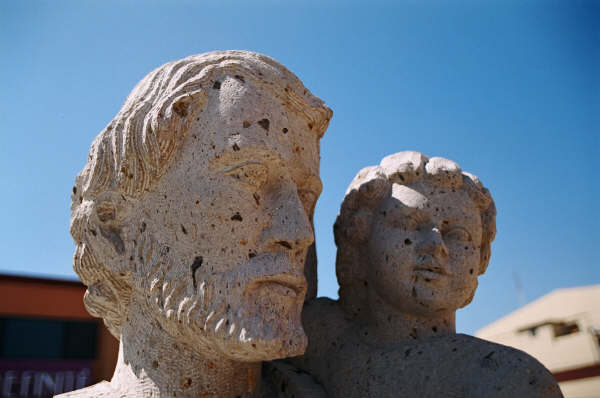
We were having a good time, but what was really on our minds was the 3:00 a.m. departure the next day. We were both a bit nervous about that. To leave at 3:00 a.m., we’d have to get up at 2:00 a.m. I briefly thought about staying up all night (after all, getting up at 2:00 a.m. would practically be the same thing), but I decided to turn in early and do the best I could to get some shuteye. I might not have bothered…I was too nervous to really sleep well. I knew we would be covering about 700 miles the next day, I was afraid I would oversleep the next morning, and I usually don’t sleep well the night before a big a trip. I was in bed for maybe 5 hours that night, but I probably only slept for 45 minutes.

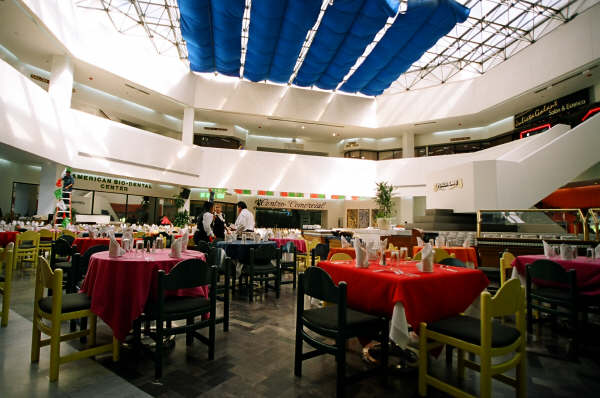
The next morning, well before sunup, we were off. Normally, even back in those days, the border crossing re-entering the US in Tijuana is difficult. Picture this…nearly 500 motorcycles idling north into a crowded but huge border station. There were maybe 15 lanes heading north, but only two were open at that early hour. All of our bikes were in those two lanes, with maybe 20 cars in front of us. But the US border officers were efficient. They opened several more lanes and motioned for the bikes to move into the newly-opened portals. We were across the border in minutes. It could have taken hours, so this was a big deal.
Once we entered the US, it was north on I-5, and then east on I-8, which we would follow well into Arizona. It was still dark out, and we rode directly into what would soon be the rising sun. It was cool, but not cold. Life was good. My Triumph was purring (or growling, depending on throttle position…nothing sounds as good as a Triumph motorcycle). There were literally hundreds of motorcycles, and all were fellow Three Flags riders. We were alive, out in the world, riding motorcycles in one of the world’s greatest motorcycle adventures. We already had knocked down two of the Three Flags, and the sun was still hiding below a distant horizon. This was good stuff.
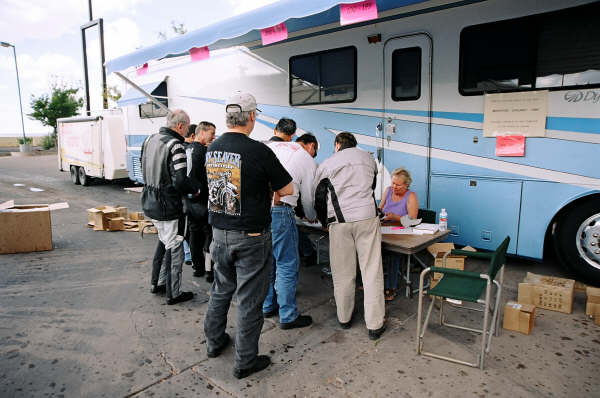
Our first checkpoint on the Three Flags Classic would be in Holbrook, Arizona. Marty had done this before, and he knew the drill. I followed his lead. I was lucky to be riding with a much more experienced motorcyclist. It took away any anxiety. It was a good feeling.
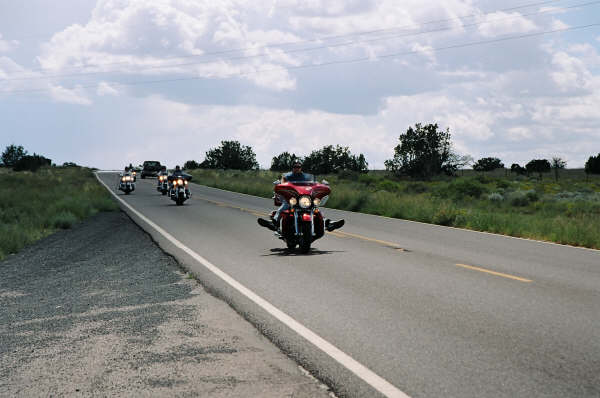

Shortly after we stepped up to get our event passports stamped, we experienced a severe rainstorm. We were delayed at the checkpoint for about an hour. I didn’t care. Covering the remaining miles that first day would take what it would take, as would the miles on the rest of the ride. Yeah, we had to make the checkpoints. But we were doing well. My Triumph was running well. Marty’s BMW was the Rolex of motorcycles, and it always did well.
After hitting the first checkpoint and after the rain stopped, we continued our ride and crossed the state line into New Mexico. Wowee…what a day: Mexico. California. Arizona. New Mexico. Two countries. Three states. All in a single day. We stopped to take a few photos, and I was loving it. My Nikon N70 35mm film camera was doing its thing, and I was working it. I was seeing grand sights and and I wanted to capture it all. I had two lenses with me…the old first generation 24-120 Nikon lens, and a 17-35 Sigma wide angle (which was actually a pretty decent lens). Our bikes were magnificent…both 1200cc road-burning four-cylinder monsters, both with visually-arresting yellow paint themes, and both capable of stratospheric speeds and arm-stretching acceleration. Both bikes could easily top 160 mph. We could (and at times during the Three Flags we would) cruise for long stretches at speeds well over 120 mph, knowing adventures like this were what the engineers in Bavaria and England had in mind when they designed these motorcycles. Great bikes, great company, great roads, and great scenery. It was an awesome show, and we were the stars.
We covered 700 miles that first day, which would be our highest mileage day for the entire Three Flags Classic. The guys who organized the 3FC05 had it wired. The first day was the big mileage day, and every day after that the miles would decrease a bit. It was a well organized event. Hit the checkpoints, see what you want to see along the way, stay wherever you want, but hit the checkpoints. It’s a great formula, and it made for a great ride.
That first night, we stayed in Gallup, New Mexico. I’d never been there before. Gallup, New Mexico. On a motorcycle. Wow. The next day, the adventure would continue. I couldn’t wait.
Hey, read the prequel to this great story here! And would you like to know more about that dynamite Daytona 1200 I rode in the Three Flags Classic? That story is here!

